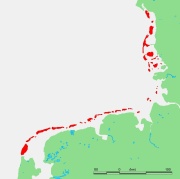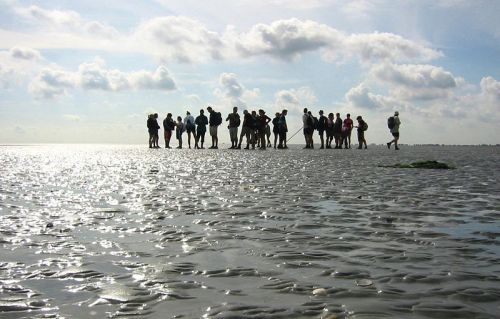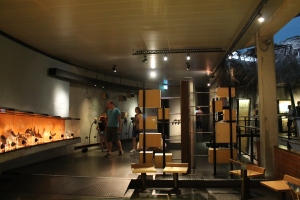The Netherlands gets a new king today. As a large part of his land is reclaimed sea or lakes, you will not be surprised to hear that one of his interests is water management. I previously wrote about the Cruquius Museum, set in a pumping station that emptied a lake in the west of the Netherlands. Centuries of fighting against the sea have made the Netherlands a world leader in land reclamation. Dutch engineers were responsible for draining the fens north of Cambridge in the UK, and improved the levee system in New Orleans after Hurricane Katrina.
 But even in the Netherlands, the sea sometimes wins. While the West coast is a neat line of dunes and dikes holding back the water, the North coast is a fringe of islands. These islands are part of the Frisian Islands archipelago that extends along the entire North coast of the Netherlands, the North East coast of Germany, and the South East of Denmark.
But even in the Netherlands, the sea sometimes wins. While the West coast is a neat line of dunes and dikes holding back the water, the North coast is a fringe of islands. These islands are part of the Frisian Islands archipelago that extends along the entire North coast of the Netherlands, the North East coast of Germany, and the South East of Denmark.
They weren’t always islands. At the end of the last ice age, they were the coast line.
About two thousand years ago the water broke through the barrier of dunes. The segments that were left became islands, and a new sea, the Wadden Sea, was formed beyond them. To protect towns and cities on the mainland from this newly invading sea, dikes were built in the Middle Ages. This means that the current shape of the islands and coast line along the Wadden Sea is only several hundred years old.
Although the Wadden Sea is always drawn as water on maps, large segments of it are actually dry for parts of the day. At low tide, it’s possible to walk from the mainland to some of the islands over the “wadden” (mud flats and sand banks).

In 2009, the Wadden Sea along the Dutch and German coast (but not the Danish section) became a UNESCO World Heritage site. This newly acquired protected status is good news for the Wadden Sea’s most famous inhabitants: as of the last count, over 26 thousand harbour seals and four thousand grey seals live in the area.

This weird patchy dry sea is perfect for seals. They hang around on the wadden during low tide, and hunt in the water during high tide. Unfortunately, in 2002, a virus wiped out more than half of the harbour seal population, but they’re gradually coming back and the animals are doing well at the moment.
The well-being of the seal population is kept in check by several seal rescue centres along the Wadden Sea coast. One of them is located at the very west end of the sea, on the island of Texel. Ecomare is more than a seal rescue centre. It’s also an educational facility about seals and the Wadden Sea, and a popular tourist attraction. The seals are the best part, though. They regularly have baby seals in the rescue centre. In summer they’re harbour seal pups, and in winter grey seal pups, because they’re born in different seasons.
To end this on a sobering note, the rescue centre doesn’t just take in seal pups. They also rescue and clean birds that have been covered in oil from spills. In the seventies and eighties there were much more oil victims among Wadden Sea birds than there are now, but sadly bird cleaning is still a regular thing that places like Ecomare have to deal with. A few years ago, German researchers mapped the regions of their section of the Wadden Sea where oil spills were most likely to occur, so they could be quicker to respond, but, really, there just shouldn’t be any oil spills to begin with.
You can virtually visit Ecomare and all the sites we have visited with the Have Science Will Travel Google Map.
Credits: Wadden Sea walkers by Michielvd on Wikimedia Commons. Seals by Mhaesen on Wikimedia Commons. Map of islands, public domain, also via Wikimedia Commons.


















